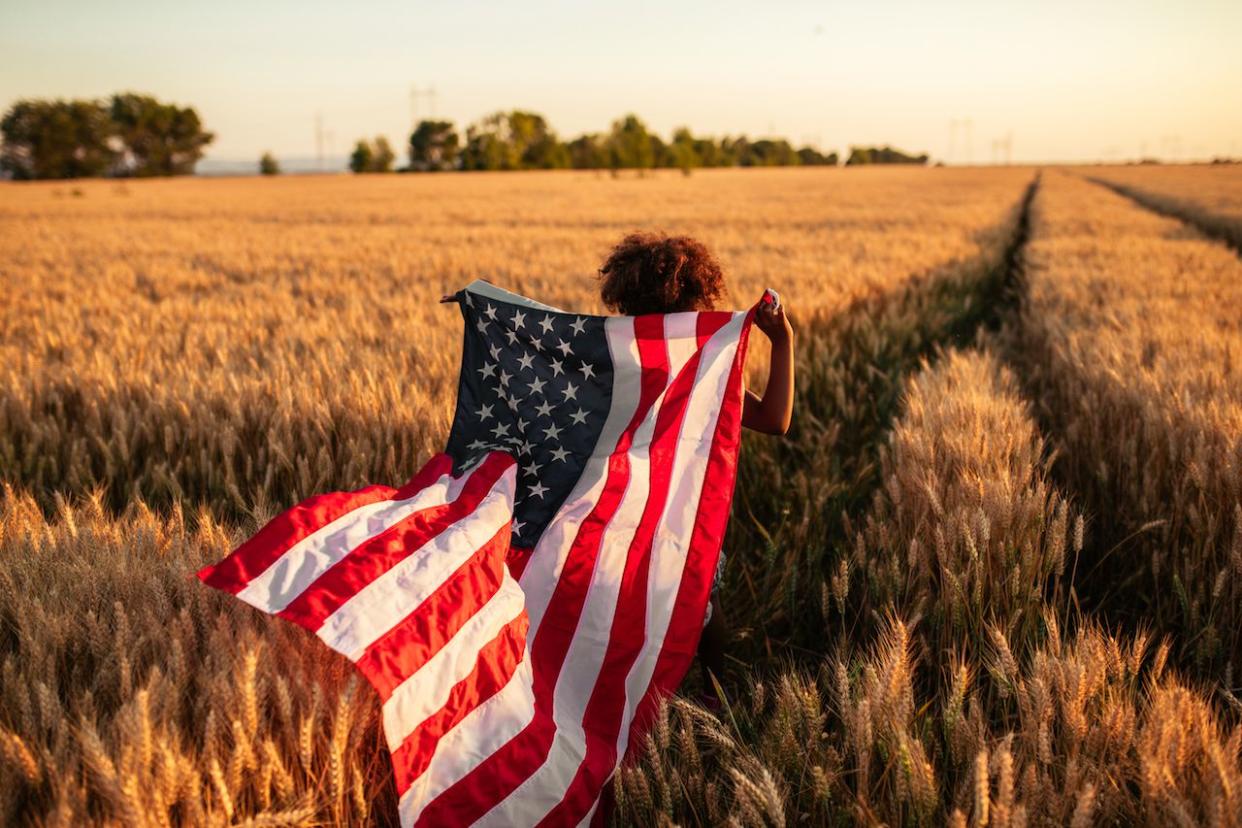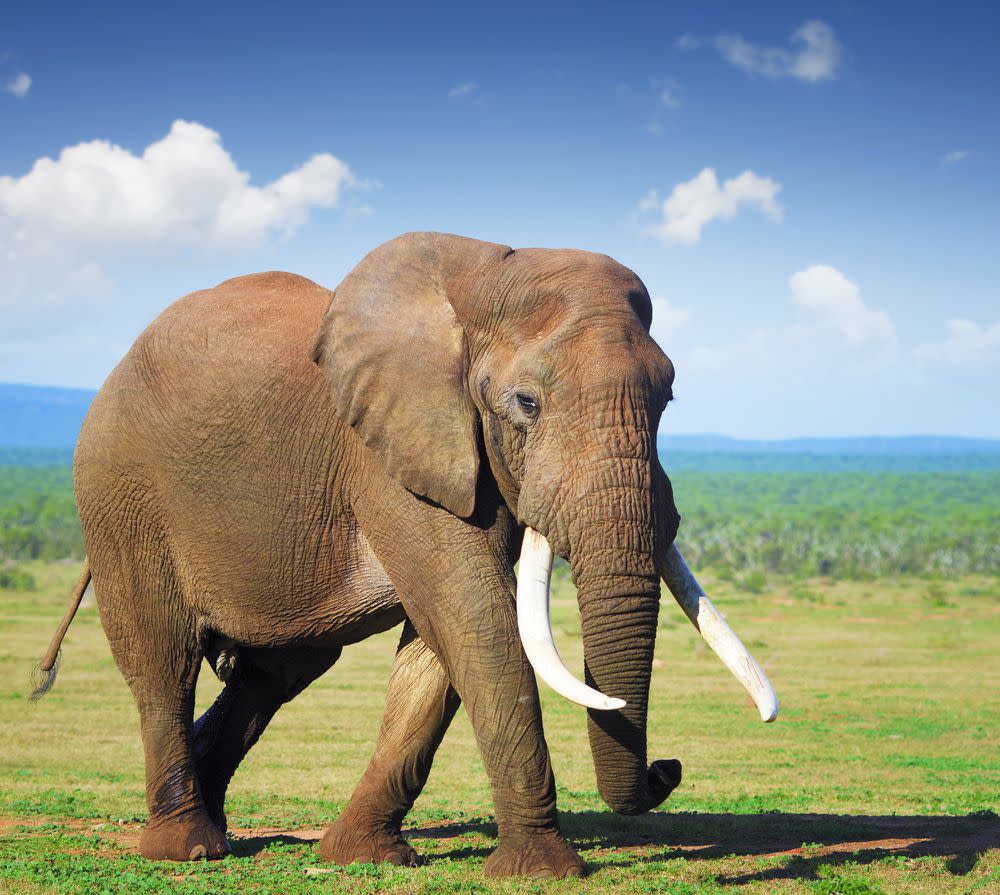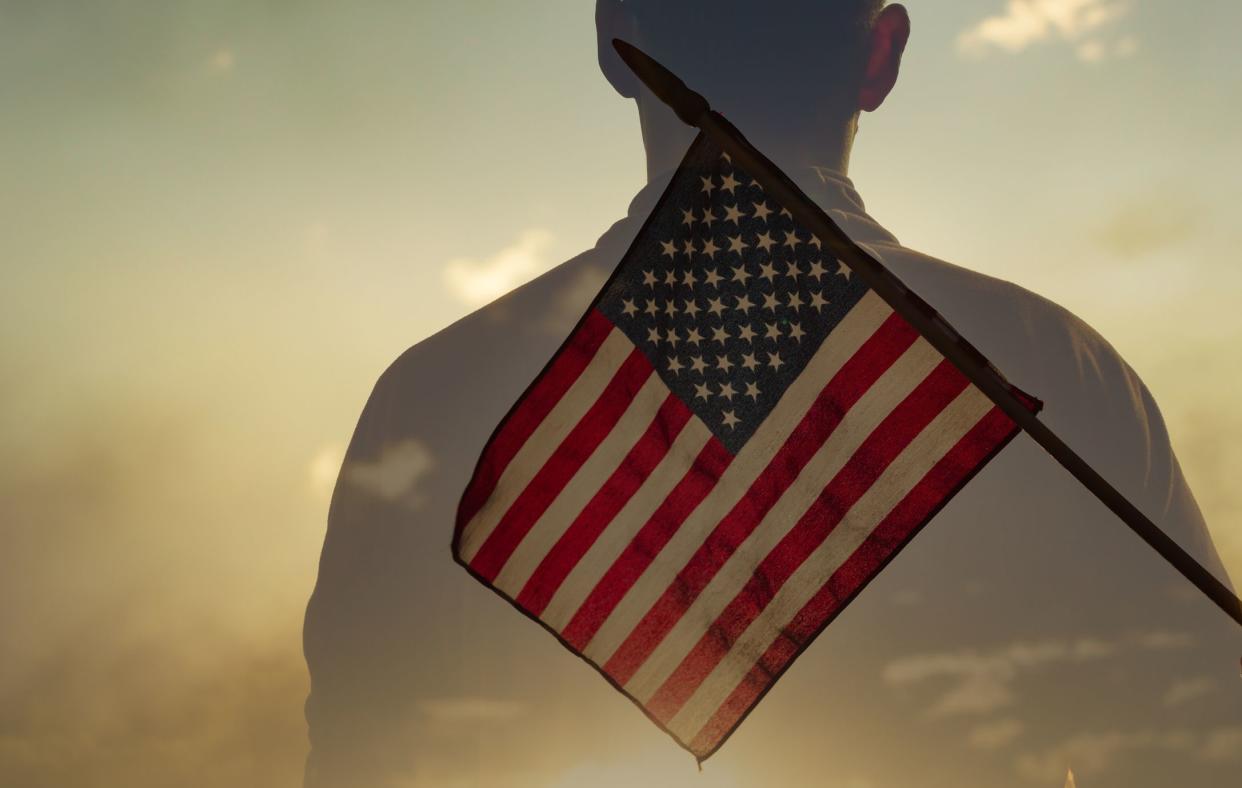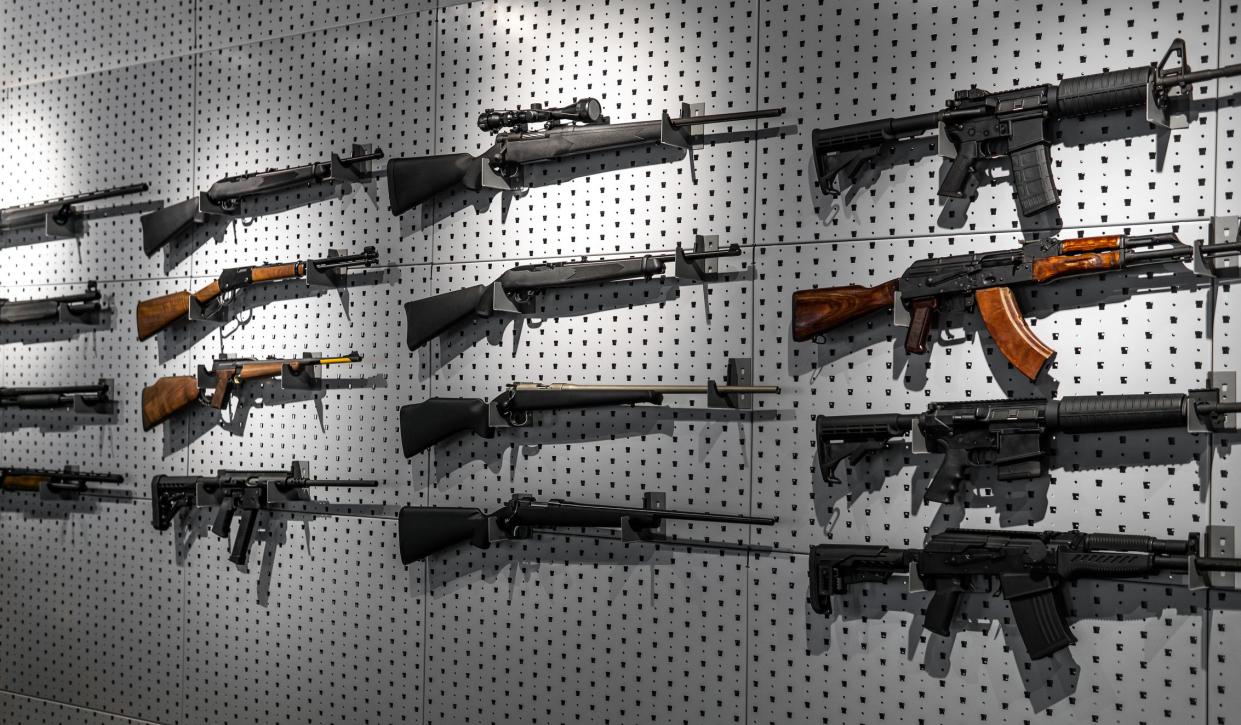50 Facts You May Not Know About US Involvement in War

America at war: Facts about WWI, WWII and Vietnam
America has been involved in a war for a total of 222 out of 229 years since 1776. That means since its founding, the nation has been at war 93% of the time. However, not all of those wars were ever declared one by an act of Congress, such as the Vietnam War.
Nonetheless, these wars and conflicts have had a long-lasting impact on the U.S. and countries around the world. We've scoured through lots of historical data to put together this list of facts you may not know or remember about American wars and conflicts, and how life changed in their aftermath.
Let's start with World War I:
(Editor's note: This article was updated in May 2024)

1. Millions of soldiers and civilians died
Death estimates for "The War to End All Wars" vary greatly by study. However, most estimates put the total number at around nine million combatants and seven million civilians.

2. The Spanish Flu killed massive numbers of soldiers
It's believed that The Spanish Flu is responsible for about a third of all military deaths in WWI.

3. It wasn't even in the Top-5 most deadly wars
Technological advances in later wars would result in more efficient and deadly weapons. As such, while still catastrophic, WWI ranks as just the sixth-most deadly war.

4. Remember 11/11/11
WWI famously ended at 11 a.m. on the 11th day of the 11th month of 1918 — that's 11 a.m. on November 11, 1918.

5. The U.S. emerged a military superpower
It wasn't until the efforts to build up the U.S. military during WWI that the nation would be known as a superpower. The United States exited the war with the largest military on the planet.

6. You can visit a WWI French soldier's room
France preserved a French soldier's room from 1918. The soldier died in the war.

7. This pigeon saved almost 200 soldiers
A homing pigeon named Cher Ami is credited for saving 194 soldiers. The pigeon had been shot in the chest and lost one eye and a leg. However, it still delivered a critical call for help from the battalion: “We are along the road parallel to 276.4. Our own artillery is dropping a barrage directly on us. For heaven’s sake, stop it.”

8. A Hungarian man lost the ability to sleep because he was shot
After being shot in the frontal lobe, Hungarian soldier Paul Kern lost his ability to fall asleep, according to reports from local paper. He reportedly did not sleep again during the remaining 40 years of his life.

9. Chemotherapy is a by-product of mustard gas
Chemotherapy treatments for cancer are actually derived from WWI mustard gas. At least two dozen medical researchers transformed the gas into chemotherapy after the war, and it became a common treatment in the 1940s.

10. German women had a hard time finding husbands
After the war, only1 in 3 German women could find a husband since so many were killed during the war.

11. Native Americans helped win the war
Around 13,000 Native Americans fought in WWI. Nonetheless, they still had not been granted U.S. citizenship.

12. Troops sorted tanks by 'gender'
Soldiers would group their tanks by "gender" during WWI. Male tanks had a cannon attachment, and female ones were used to carry machine guns.

13. TNT gave many women jaundice
Many American women joined the war efforts in WWI. Some worked producing TNT and noticed that their skin was turning yellow. That's because the TNT was giving them a toxic form of jaundice.

14. Blood banks were invented because of WWI
Blood transfusions became a critical part of caring for wounded soldiers. As such, the first blood bank was created on the front line in 1917.

15. So was plastic surgery
Harold Gillies founded the field of plastic surgery after seeing soldiers' disfigured and often masked faces. He would also be the first person to attempt facial reconstruction.

16. Franz Ferdinand's license plate was ominous
The assasination of Archduke Franz Ferdinand and his wife on June 28, 1914 started the war. His license plate number? 111 118, which is eerily close to 11 November '18, or Armistice Day.

17. The youngest-known soldier was 12
It wasn't uncommon for many young American men to fake their age so they could fight. It's believed that the youngest-known soldier to do so was Sidney Lewis, who was just 12 upon enrollment.
Now let's look at WWII:

18. Most kamikazes died without hitting their target
While kamikazes were relatively common in WWII, it's estimated that only 1 in 9 pilots successfully hit their targets.

19. Queen Elizabeth II was a war mechanic
Queen Elizabeth II wanted to help with the war efforts. As such, she ended up becoming a WWII mechanic.

20. A Paris mosque helped many Jews escape
The Mosque of Paris reportedly helped many Jews escape Nazi reign in WWII by giving them Muslim ID cards.

21. About 80% of an entire male USSR generation died
Estimates suggest that 80% of USSR males born in 1923 died during WWII.

22. One midwife alone delivered 3,000 babies in Auschwitz
Stanisława Leszczyńska, a Polish midwife, delivered about 3,000 babies in the Auschwitz concentration camp.

23. American soldiers got more toilet paper than British ones
American soldiers got a ration of 22 sheets of toilet paper per day. Their British counterparts only got three.

24. Car production dramatically decreased
The U.S. manufactured over three million cars in 1941. As more car plants converted to producing war materials, the U.S. only pumped out 139 more cars than that number for the entirety of WWII.

25. Most German soldier deaths happened at the same spot
Four out of five of all German deaths happened at the Eastern Front.

26. Most U-Boat soldiers didn't survive
It's estimated that only one in four soldiers stationed on a U-Boat made it out of the war.

27. The French made Hitler walk to the top of the Eiffel Tower
When Adolf Hitler visited the Eiffel Tower, the French cut the tower's elevator cables so he'd have to climb up to the top. That's a total of 1,665 steps.

28. Hitler ordered the Eiffel Tower demolished
Perhaps unsurprisingly, Hitler ordered the tower demolished. The French refused.

29. Hitler's nephew fought for the U.S.
William Hitler, Adolf's nephew, served in the U.S. Navy during WWII.

30. Only one Berlin Zoo elephant survived the war
Before WWII, The Berlin Zoo had eight elephants. Only one elephant, named Siam, survived.

31. The Allies had backup plans to bomb Tokyo
After bombing Hiroshima and Nagasaki, the Allies were also prepared to drop a third atom bomb on Tokyo if they thought it was necessary.

32. Fanta was invented because of WWII
Coca-Cola had a hard time shipping its Coca-Cola syrup into Germany during the war. It created Fanta to serve that market.

33. WWII Oscar statues were made of ...
Because of a metal shortage, Oscar statues made during the war were plaster and only painted gold during WWII. That's three years' worth of plaster statues.
Next, let's take a look at the Vietnam War:

34. It's got a lot of names
The Vietnam War goes by a lot of names around the world, including The Second Indochina War, The Vietnam Conflict, and, in Japan, The Resistance Against America.

35. The U.S. had over 5,000 'war dogs'
While in Vietnam, the U.S. army deployed over 5,000 war dogs.

36. Troops used plastic explosives to get a buzz
Some American troops used tiny amounts of the plastic explosives powder C4 to get high.

37. Vietnam farmers used U.S. fuel tanks as boats
After the conflict, Vietnam farmers commonly took leftover U.S. fuel tanks and made them into canoes and boats.

38. The US gave its soldiers drugs
The U.S. military gave its soldiers a plethora of drugs to up their strength, speed and stamina. In just three years, from 1966 to 1969, the U.S. military handed out about 225 million stimulants.

39. Nearly 40% of U.S. deaths were a result of friendly fire
It's estimated that 39% of U.S. casualties resulted because of friendly fire.

40. The U.S. and Vietnam presidents were shot in the same year
In 1963, U.S. President Kennedy and Vietnamese President Diem were shot. They were also both Catholic.

41. The U.S. had 'detectors' to find humans
Under Operation Snoopy, the U.S. military used "people detectors" that could sense human urine and sweat. However, the detectors often gave out false positives.

42. American soldiers marked dead bodies with playing cards
Many American soldiers had been told incorrectly that the ace of spades represented death in Vietnamese culture. As such, they often left an ace of spades on dead bodies.

43. Most of the deaths were Vietnamese
During the Vietnam Conflict, about 58,220 Americans died. About 2 million Vietnamese civilians died, compared to about 1.35 million Vietnamese soldiers.

44. The Vietnamese had death rituals
Many Vietnamese had a death ritual to help the dead go to the afterlife. Those who weren't properly buried were believed to haunt the living.

45. Americans preyed on this ritual
Many Americans would play ghost noises in the jungles to scare the Vietnamese.

46. Local women welcomed soldiers with flowers
When U.S. troops first arrived, many local women welcomed them with flowers.

47. The M16 was awful
Although one of the most recognizable guns, many U.S. soldiers hated the M16 because it frequently jammed.

48. They often preferred enemy guns
Since they hated the M16 so much, many U.S. soldiers took the AK-47 from enemies that they killed.

49. Most U.S. soldiers were volunteers
Taught by their "Greatest Generation" parents and grandparents about the evils of communism, most U.S. soldiers actually volunteered to fight in Vietnam.

50. Most Vietnamese now see the U.S. as an ally
Despite the atrocities in the Vietnam Conflict, a Pew Research survey found that most Vietnamese now see the U.S. as a key and powerful ally.
This article was produced and syndicated by MediaFeed.





